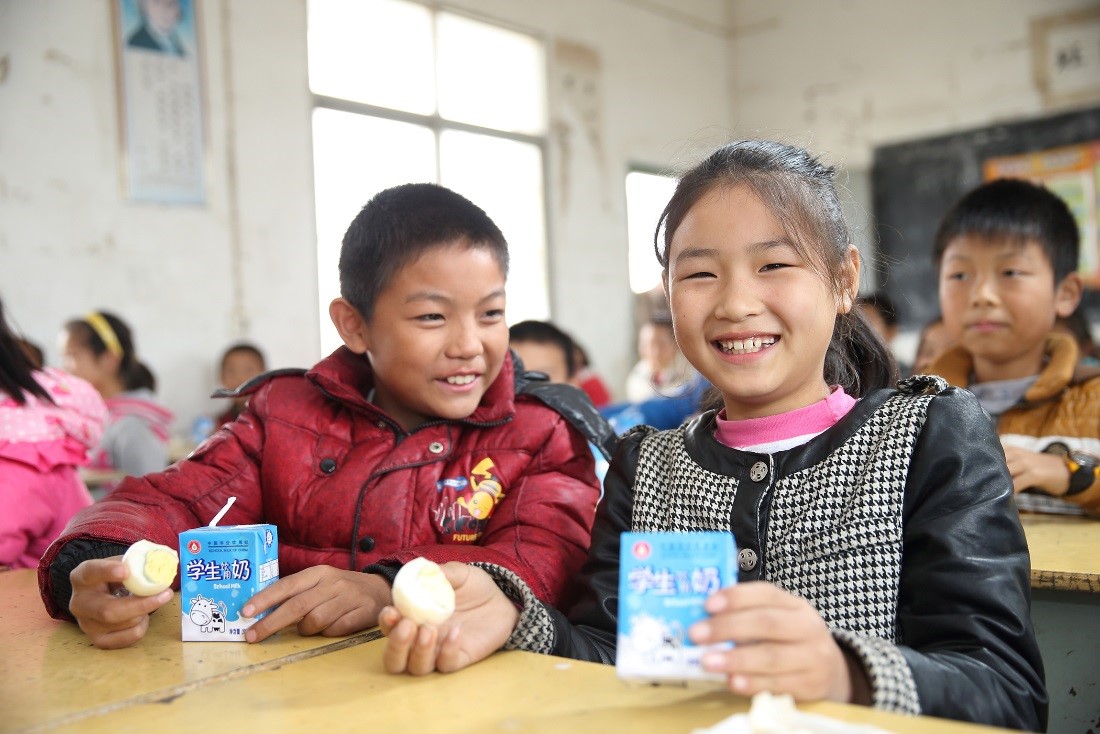National School Milk Programme (Dairy Association of China)
Providing milk and free lunches across schools in China


Location
China
Number of children
27 million
Age range
Ages 6-15
Timing
2000-present
Program overview
The National School Milk Programme was founded in 2000 whose aim is to provide warm free lunches to children in rural areas, and children of working mothers.
Wang, H., Zhao, Q., Boswell, M., & Rozelle, S. (2020) report on data on the health of school children that motivated the creation of the Nutrition Improvement Program for Rural Compulsory Education Students in 2012: in 2010 anaemia was prevalent in 10M schoolchildren, 20% were stunted and many were malnourished. This data was especially true in rural areas, much poorer than urban areas, where families provided mainly a starch-based diet.
Nation-wide, in 2017 the milk per capita yearly consumption was 94,63kg, totalising to 260mL per day.
(Per capita milk consumption, 2000 to 2017)


Type of products
Units of 125, 200 or 250mL UHT, Pasteurized, Sterilized and Fermented milk (Dairy Association of China, 2021
Stakeholder engaged
Ministries of the Chinese Government (Supervision) Dairy Association of China (Promotion and Management) (Dairy Association of China, 2021)
Additional details
The Dairy Association of China's future goals is to reach 35M children and distribute 32M units per day, introduce other dairy products: fermented milk, cheese and pasteurized milk and increase the number of companies included.
Rules for procurement of dairy products
The providers of milk enter a public biding and, once approved according to the safety of the products, receive the logo DAC (Dairy Association of China, 2022). Providers must follow these rules: Daily fresh milk processing capacity ≥ 200 tons; Certified by the Good Manufacturing Practice (GMP) for milk products; Certified by the Hazard Analysis and Critical Control Point (HACCP) system; Certified by the ISO 9001 quality management system; Minimum three years tracked record of liquid milk production; Passed the national quality supervision and sampling, with no food safety incidents in past three years. (Wei, Z., 2021; Dairy Association of China, 2022). All producers are responsible for quality testing, product tracing and food safety measures in the schools, as well as alternative strategies in case of disruption of the safe distribution of milk to pupils.








